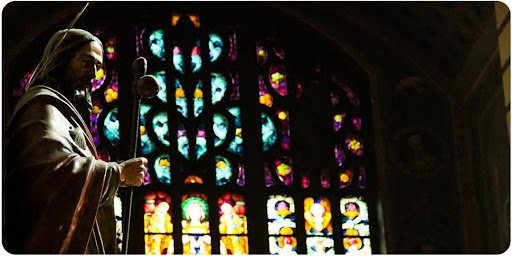Eucharistic Prayer I
By Father Luke Spannegal
As we have been reflecting on the Intercessions of the Eucharistic Prayers, perhaps it is a good time to address all those saint names in Eucharistic Prayer I. Who are all those people? Of course, the first list begins with Mary and Joseph and then the “blessed Apostles and Martyrs,” including Peter, Paul, Andrew (Peter’s brother), James (“the Greater”: the brother of John), John, Thomas, James (“the Lesser”: the son of Alpheus), Matthew, Bartholomew, Simon (“the Zealot”), and Jude (also called Thaddeus).
The First List of Saint Names
Continuing this first list of saints in Eucharistic Prayer I, “Five popes head the list: St. Peter’s first three successors, Linus, Cletus, Clement; then two popes of the third century, Sixtus II and Cornelius; Cyprian, Bishop of Carthage, the intrepid defender of Catholic unity; the deacon Lawrence, who when his persecutor demanded from him the ‘treasures’ of the Church, showed him hundreds of poor people; Chrysogonus, a Roman priest who carried out the holy work of comforting the Christians who were in prison; two brothers, John and Paul, both officers of the [Roman] imperial palace, who were put to death under [the emperor] Julian the Apostate; and lastly, Cosmas and Damian, two Oriental physicians who gave their aid freely, and at whose graves there occurred ‘yet more cures than they had effected in their lives’”
The Second List of Saint Names
As for the second list of saints in Eucharistic Prayer I, we ask for “some share in the fellowship” of several saints who were martyrs. “It mentions, in the first place, John (here obviously St. John the Baptist), and then seven men, followed by seven women, all martyrs. Stephen is the first deacon, whose glorious martyrdom is recounted in the Acts of the Apostles (6:8-7:60). Two apostles come next: Matthias, elected to take the place of Judas (Acts 1:15-16) and probably left out of the first list so as not to exceed the number of twelve, and Barnabas, St. Paul’s companion in his first missionary journey. Ignatius is the famous bishop of Antioch, sentenced to be fed to the wild beasts in Rome under [emperor] Trajano. Besides their names and the place of their martyrdom, little else is known of Alexander, the priest Marcellinus, and the exorcist Peter, who were all put to death in the great persecution of [emperor] Diocletian. The list continues with the names of the two young girls, Felicity and Perpetua (their names form the expression ‘everlasting happiness’), who confessed their faith at Carthage [in North Africa]; and of Agatha and Lucy in Sicily. It concludes with the names of two young martyrs beloved by the Romans, Agnes and Cecelia; and of Anastasia, martyred at Sirmium and later honored in Rome”.
All these saints are important because they were among the many early witnesses to Jesus Christ and the Christian faith. These are our spiritual fathers, our older brothers and sisters in Christ, who showed us that our faith was worth living and dying for. They showed us that, strengthened by the true presence of Christ in the Eucharist and the presence of the Holy Spirit in their hearts, they could overcome any persecutions and sufferings, even to the point of being killed. These saints give us great hope, and their prayers for us give us confidence that we, too, can live out the faith as they did, that we can live our life in Christ every day and look forward to the glory of heaven!
For Reflection:
1. Take time to pray by name for the people in your life who have witnessed the faith to you.
2. Next time you hear a celebrant use Eucharistic Prayer I, pay attention to the names in the list of saints and give thanks for their presence with us—as members of the Communion of Saints—at Mass.



